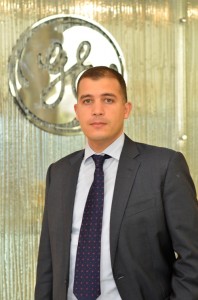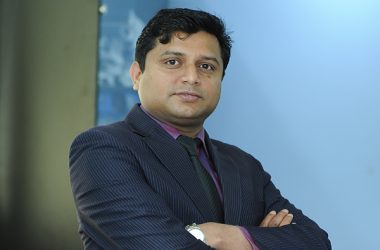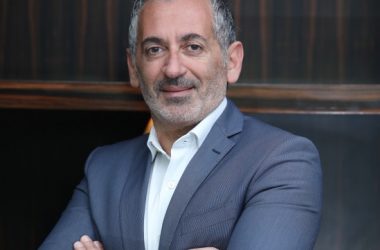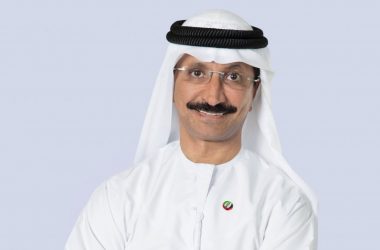
There is nothing more salivating for most business heads than the prospect of being a huge global company. But as the IT team at General Electric will tell you, it can be a massive headache when it comes to collaboration.
When you are a multinational conglomerate corporation, implementing the latest technologies is not an option – it’s a given.
For General Electric, which is listed as the third largest company in the world by the Forbes Global 2000, it is absolutely pivotal to its success.
Nobody believes that more than its CIO for the MEA region, Fady Sleiman. And with 300,000 employees worldwide – 4,500 in the 27 countries that Sleiman oversees in GE MENA and Turkey alone – collaboration is naturally at the top of the IT priorities.
“GE is very big on collaboration at the moment,” Sleiman says. “It’s a big theme – connecting our employers, customers and suppliers. We’ve been trying to get this out for a few years here, but unfortunately due to the cloudy space of voice over IP, it wasn’t achievable at that time.”
With this in mind, last year GE approached its service operator du voicing its eagerness to implement telepresence (TP) in its MEA headquarters in Dubai.
“We wanted a system that was an expensive piece of kit but brought huge amounts of benefits with regards to collaboration. We’re talking about a tool that our senior executives could use so they don’t have to travel for a day or two day meeting,” Sleiman says.
GE’s driving objective in the project was to keep its leadership local. As a multinational organisation headquartered in the USA and with other important offices in Europe and Asia, GE wanted to significantly reduce the travel (and subsequent costs) that its senior executives from this region required to keep connected with its key global offices.
“To enable us, we looked at what collaboration technologies are. We worked with du finding out how we could overcome any issues from the Telecommunications Regulatory Authority (TRA). We stuck in a point-to-point MPLS connection and connected that back to our UK data centre,” Sleiman says.
He adds that what made building the solution more complicated was GE’s way of operating with a global infrastructure services (GIS) group that takes control of all infrastructure in any region, meaning there were several teams to collaborate with.
“Whenever we want a new circuit or anything like that, these guys come in and implement the projects with the local project managers. We worked with Verizon, du and the GIS group in order to give us that point-to-point connection,” he says.
A fast implementation
However, the teams pulled together and managed to achieve the implementation in nine weeks, which Sleiman saw as a fantastic achievement for a project of that size.
“It was a great accomplishment,” he says. “The first meeting held was between the CEO and the global operations CEO, so it was a very high profile meeting.”
The tool itself is a Cisco 3012 – a large unit made up of three 62” screens that provide a realistic face-to-face experience.
With GE already boasting between 500 and 600 of these units globally, the Dubai headquarters can now interact with any of these TP units around the world.
“This type of technology is so sophisticated that they don’t even have to press a button. They walk into a room and as soon as the meeting is scheduled to start it will just prop up on a screen and get going,” Sleiman says.
GE has now started to deploy six additional units throughout the region to further enhance collaboration. “From an IT prospective we’re trying to take it within this region to another level,” he adds.
When it came to choosing the vendor and solution provider, it was a relatively simple decision for GE.
“We chose Cisco because that’s our preferred supplier of telepresence solutions globally. It was a pretty robust process because we have to have a preferred supplier first and we have to vet them. The problem is we find that none of our global service providers can carry both voice and data. Verizon, which is one of GE’s global partners, can only do data, so we had to go local. At the time, du was the only provider operating from this office, so that’s why we chose them,” Sleiman says.
“But it turned out to be a good experience. We saw the things we need to see from vendors in pulling out the stops to deliver and execute. In terms of customer experience, we don’t want jitter on the line and we don’t get that much. Then of course it always comes down to costs – we had to think how this large and expensive investment would give value back to the organisation and stakeholders. If we’re spending big, there needs to be a big return on investment,” he adds.
As GE’s first TP unit in the MEA region, it was new to both GE’s regional team and du, but the implementation, which went live in April 2011, was seen as a “global success” for the company.
“We tend to deliver TP units in anywhere between 12 and 20 weeks, so for us nine weeks was a fantastic result. I’m talking globally, not just locally. It was a really good result. There were a few teething snags at the beginning but they were more due to the configuration of the system. Besides that it was delivered very well,” Sleiman says.
“We got our local end-user support team to provide the training to the admins. We also knew there would be a certain group that would use the TP unit more than others so we provided them more training to use the system,” he adds.
Culturally challenging
However, like any IT project, it wasn’t without its challenges. The key challenges in this particular project came down to compliance and cultural differences.
“We had to go through the process of finding out if what we were doing was compliant in the country. Another challenge was linking the technical teams between each other. They’re from a different culture and we’re at different stages in the use of technology, so the guys back in Europe are on the cutting edge whilst the guys here have good technology and are driving for newer technology, but it was difficult at times to get them on the same page,” Sleiman says.
“But they did a great job driven by their willingness and eagerness to get together, understand and put that solution in place as quickly as possible. We’ve experienced very good quality with the telepresence and we get very minimal disturbance in the service,” he adds.
GE is measuring ROI from the project by looking at the usage of the unit and the schedules from the utilisation of the line and service.
“We tend to keep the telepresence utilisation between 60 and 70 percent – if it gets too much then people can’t use it because it’s too busy – and as long as we’re hitting that target we’re reducing travel considerably,” he says.
“I’m talking about the long-haul travel and even with shorter travel we’re only keeping it to must-meetings that they have to attend and that’s why now the regional CFO has supported the initiative of rolling out the TP strategy across the region,” he adds.
With the success of GE’s TP unit in Dubai, and more on the way throughout the region, Sleiman says the next step in its collaboration plan is voice over IP.
“We’re trying to raise the bar for doing business in this region and we’re having to because of the type of growth figures that we have. We have to change and we’re used to change to make sure we can cater for these things. That’s why we’re preparing for voice over IP and it looks like it’s going to be upon us very soon,” he says.
“That will bring huge benefits to GE because we have around 300,000 employees that are on our voice over IP solution globally so you can just imagine the scale of how that would assist us instead of making all these calls and stuff. Once we’re on our own network we will enjoy huge savings,” he adds.
Sleiman says the tough economic climate has changed how GE operates and led it to go back to basics with IT.
“We have to make sure that what we took for granted in the past we no longer take for granted anymore. So we are constantly thinking about are we doing it right and what is the most efficient and cost-effective way? It’s enabled us to sit back, look at what we’ve done and improve our operational excellence,” he says.
On the other hand, it has also led to management seeing the true value in IT, resulting in the subsequent investments in infrastructure and TP.
“These are expensive technologies,” Sleiman says. “But when you explain it to the senior leadership that if we end up doing this you’re going to get this in return, and how it effects the bottom line and productivity, the buy in will always be there,” he concludes.





